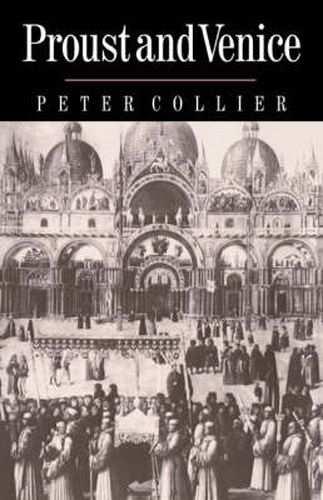Readings Newsletter
Become a Readings Member to make your shopping experience even easier.
Sign in or sign up for free!
You’re not far away from qualifying for FREE standard shipping within Australia
You’ve qualified for FREE standard shipping within Australia
The cart is loading…






Proust’s famous novel A la recherche du temps perdu (Remembrance of Things Past) is a fascinating exploration not only of memory and desire, of high society and everyday life, but also of art. The study focuses on Venice, one of the hero’s central obsessions, and shows how a whole network of allusions to art (from Titian to Turner, from Ruskin to Emile Male, from Giotto to Bellini, from Byzantine mosaic to the dresses designed by Fortuny after paintings by Carpaccio) ties in with the hero’s quest for self-knowledge and self-fulfilment. Peter Collier demonstrates how an understanding of the writer’s artistic sources and reworkings can shed light both on Proust’s complex prose style and on the aesthetic theory proposed by his novel. Most importantly, Venice and Italian art provide a new key to the central themes of the novel: memory and desire.
$9.00 standard shipping within Australia
FREE standard shipping within Australia for orders over $100.00
Express & International shipping calculated at checkout
Proust’s famous novel A la recherche du temps perdu (Remembrance of Things Past) is a fascinating exploration not only of memory and desire, of high society and everyday life, but also of art. The study focuses on Venice, one of the hero’s central obsessions, and shows how a whole network of allusions to art (from Titian to Turner, from Ruskin to Emile Male, from Giotto to Bellini, from Byzantine mosaic to the dresses designed by Fortuny after paintings by Carpaccio) ties in with the hero’s quest for self-knowledge and self-fulfilment. Peter Collier demonstrates how an understanding of the writer’s artistic sources and reworkings can shed light both on Proust’s complex prose style and on the aesthetic theory proposed by his novel. Most importantly, Venice and Italian art provide a new key to the central themes of the novel: memory and desire.